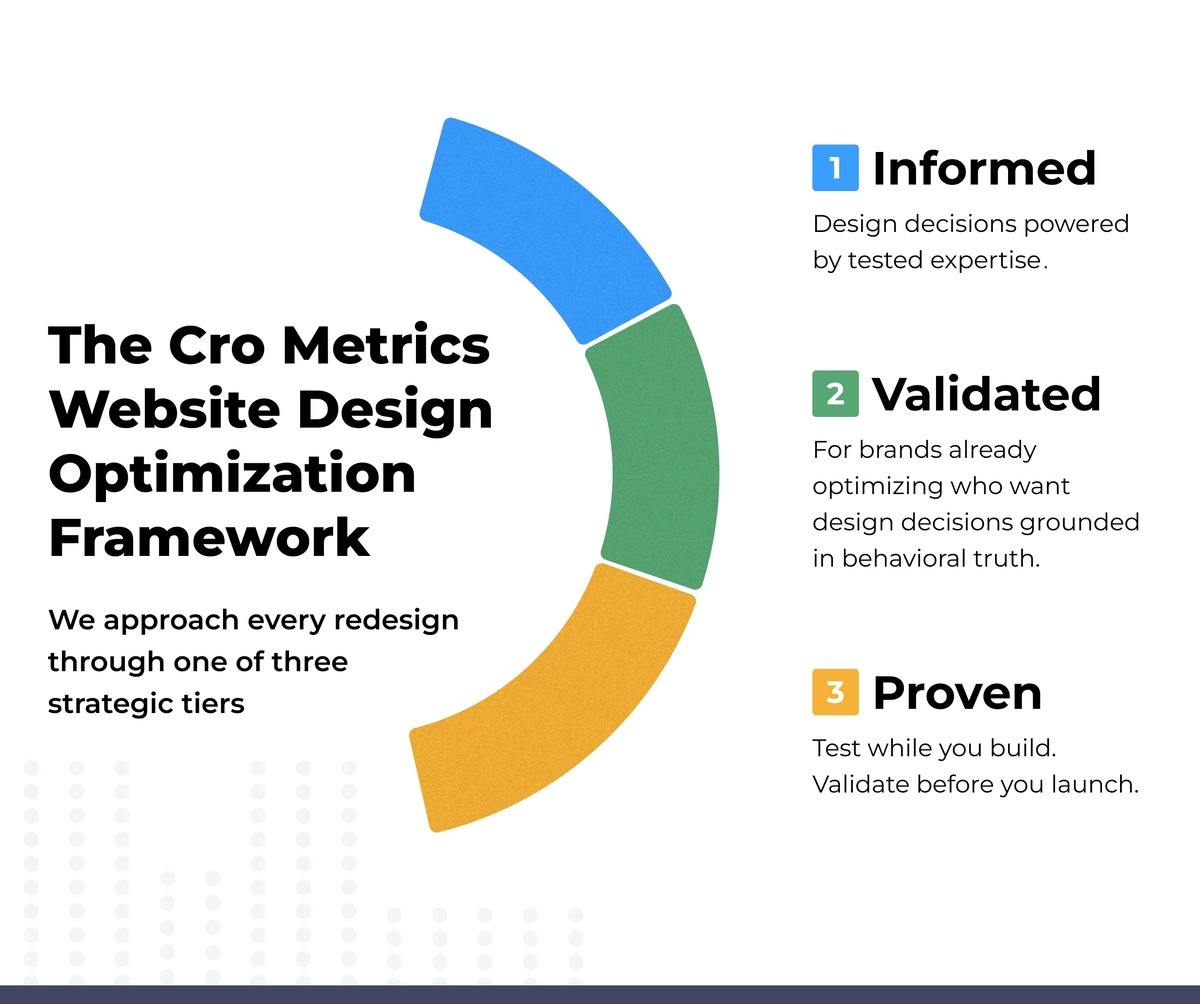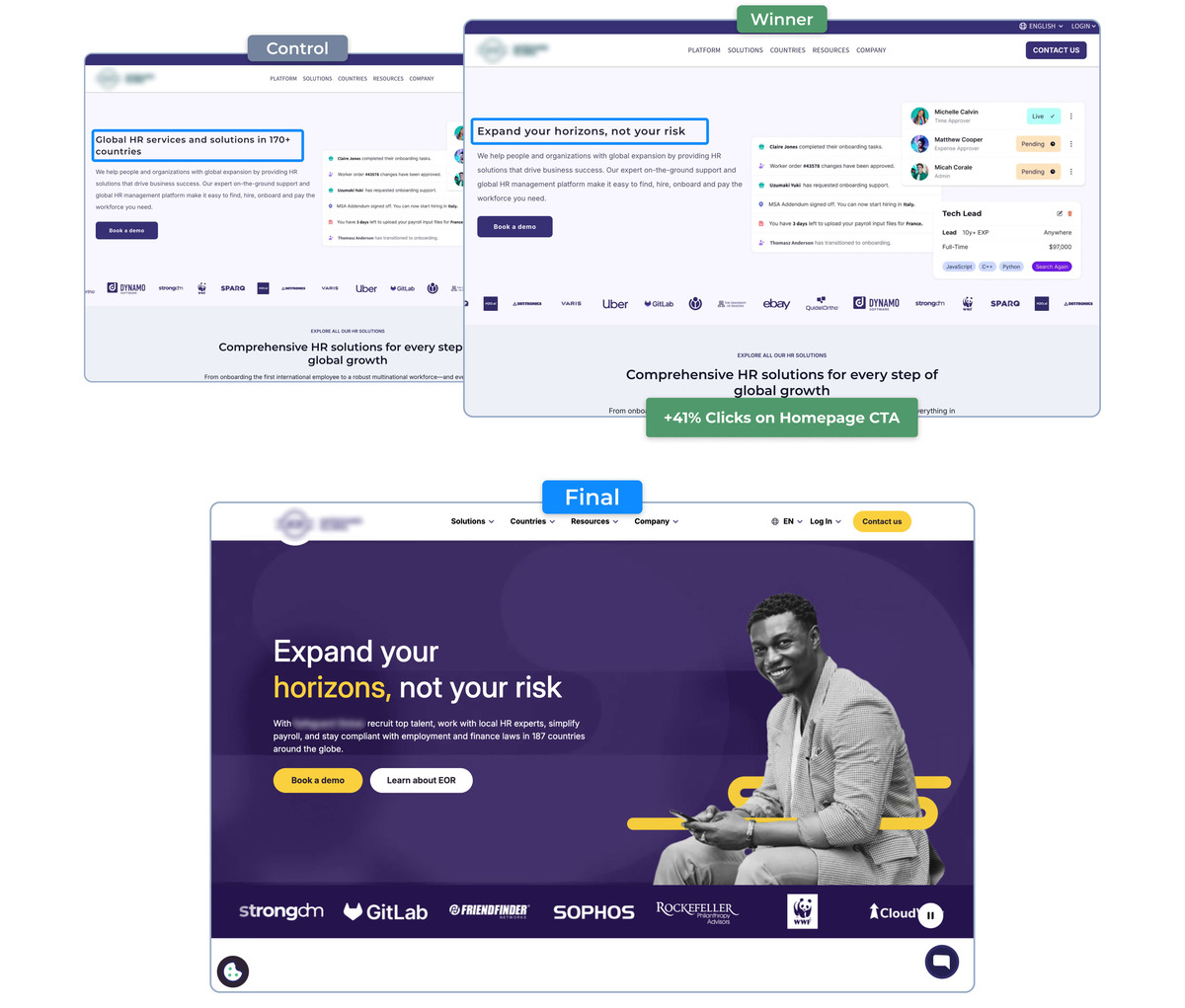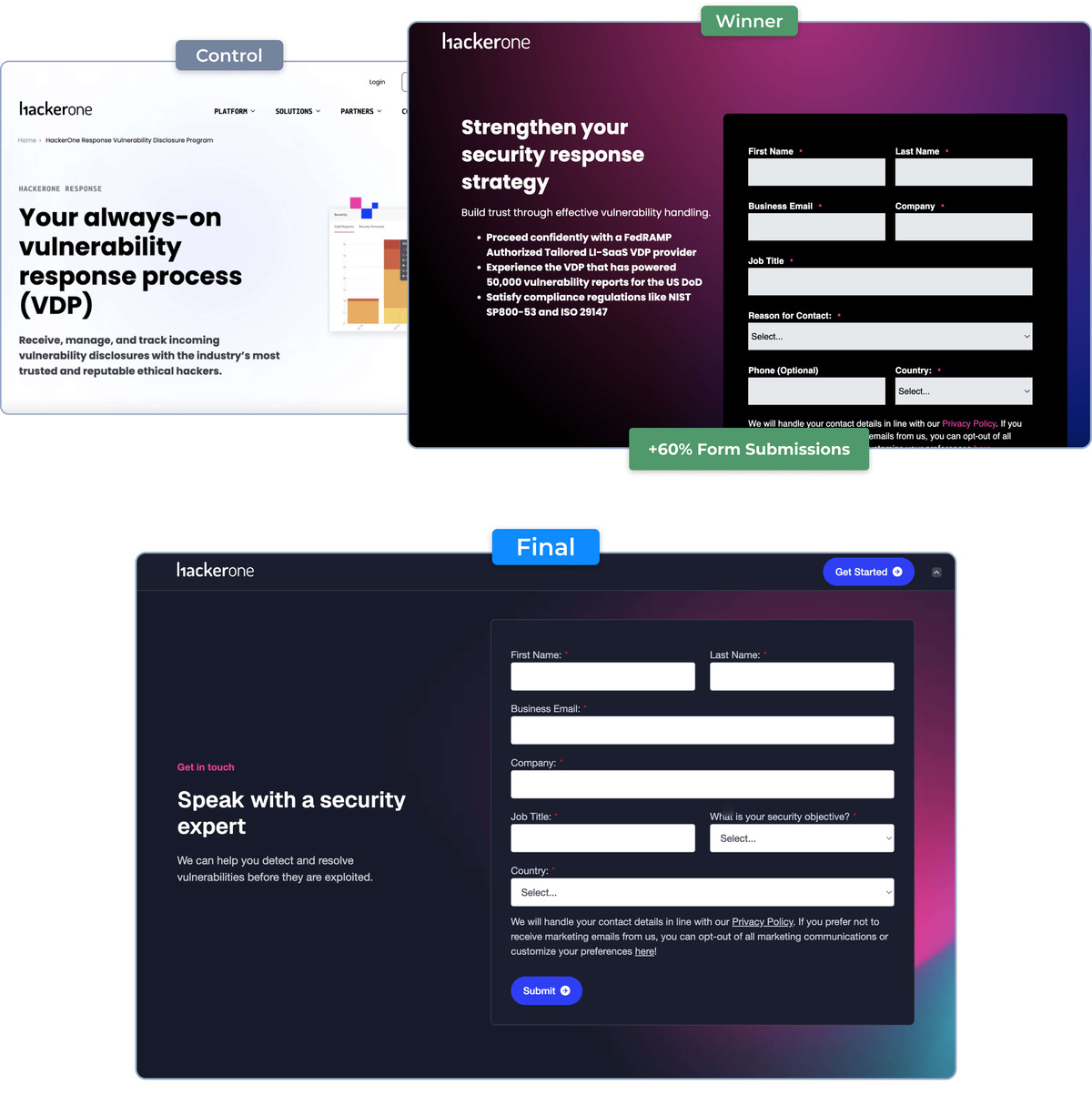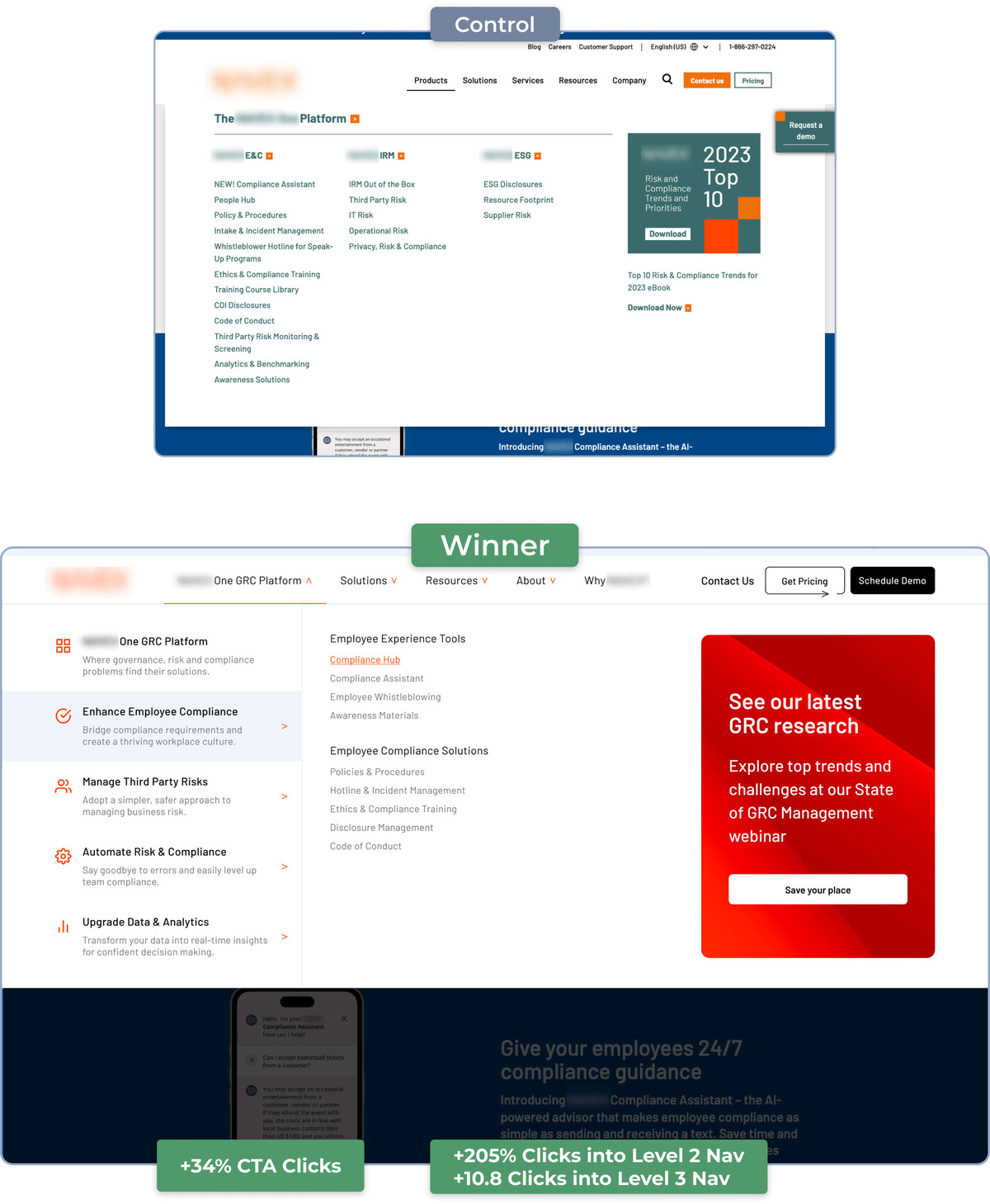Redesigning your website shouldn’t feel like crossing your fingers and hoping it works. But that’s the pattern we see far too often. At Cro Metrics, we’ve worked with enough mid-market and enterprise teams post-launch to know the typical playbook: months of effort poured into a beautiful rebuild followed by confusion and frustration when performance dips or stalls.
We do things differently. More importantly, we help our clients do things differently.
That’s why we created the Website Design Optimization Framework. A clear, tiered model that aligns teams, reduces redesign risk, and accelerates results. Whether you’re refreshing a few templates or rebuilding your site from the ground up, this framework helps you launch smarter, learn faster, and reduce the risk that often comes with major digital initiatives.
And while this post focuses on redesign strategy, we know redesigns rarely happen in isolation. They’re often part of a larger initiative, a rebrand, a replatform, a site consolidation, or a shift in business strategy. This approach accounts for those broader dynamics, helping ensure your new site aligns not just with your customer experience, but with the full scope of your organizational goals.
The Cro Metrics Website Design Optimization Framework
Because websites don’t exist in a vacuum, successful redesigns need to account for more than just how a page looks or flows. A great build balances customer experience with business goals, technical requirements, timelines, and budget.
That’s exactly what our Website Design Optimization Framework is built to do. It guides how we scope, build, and optimize websites to perform for users and for the business behind them.
We approach every redesign through one of three strategic tiers:
- Informed
- Validated
- Proven
Each tier reflects how deeply behavioral data and experimentation are embedded into the process and how we tailor our approach to fit the realities of your business. Whether your priority is speed, learning, or performance at scale, this framework ensures the outcome supports your goals and your brand aesthetic.
1. Informed
Design decisions powered by tested expertise
In this approach, our team leverages insights from over 30,000 web optimization experiments and personalization campaigns to shape a new site experience. These aren’t theoretical best practices, they’re patterns and components that have been validated through real-world performance data. Even when live testing isn’t part of the project, your redesign benefits from the experience of designers whose work is constantly pressure-tested across industries. That means even fast-moving builds are grounded in what works.
What this looks like:
- Design informed by tested, validated UX learnings
- Strategic copy, layout, and interaction patterns that have shown performance lifts
- Built by developers and designers whose work is constantly pressure-tested in live experiments
Best for:
- Brands that need to move quickly
- Teams without access to current behavioral data
- Clients leaning on Cro Metrics as their performance design partner
The Trade Off
This approach doesn’t include real-time testing specific to your users or business context. While it’s a clear step above a traditional redesign, thanks to our access to a team who has validated across thousands of experiments, it still relies on broader insights, not fresh data from your own audience.
For teams looking to reduce risk further or tailor design decisions to their current users, deeper integration with testing (as in Validated or Proven) unlocks that next level of precision.
2. Validated
For brands already optimizing who want design decisions grounded in behavioral truth.
In a Validated Redesign, the process is fueled by your existing testing and optimization program. We bring together behavioral data, strategic best practices, and our design expertise to create a new experience that’s rooted in how users actually interact with your site.
This includes pre-testing specific hypotheses before the redesign, designing based on what we learn, and then immediately testing again post-launch to maximize performance.
What this looks like:
- Leveraging experimentation, CRO and optimization data and behavioral insights to guide design decisions
- Pre-launch testing on key UX, positioning, messaging, and CTAs.
- Post-launch experimentation baked into the plan
Best for:
- Companies with an established optimization or CRO program
- Growth-stage brands looking to scale what’s working and overhaul what isn’t
The Trade Off
You’re launching a well-informed site but it’s still informed and not fully validated. This tier relies on strong alignment across teams to keep momentum after the launch date.
3. Proven
Test while you build. Validate before you launch.
This is our gold standard. Instead of treating testing and redesign as separate phases, we embed experimentation directly into the design and development process.
We test real content, modules, layouts, and messages in production while the rest of the redesign is still underway. That means by the time the new site launches, we’ve already validated the highest-impact decisions.
What this looks like:
- Live testing of hero messaging, CTA language, global & trust-building elements, form flows, and navigation
- Iterative decision-making between designers, strategists, and developers
- Winning designs and strategies funneled straight to the site for optimal performance at launch
Best for:
- Brands with experimentation infrastructure in place or desire to plug into Cro Metrics experimentation framework
- High-stakes site overhauls tied to revenue or product goals
- Teams ready to maximize ROI and minimize post-launch risk
The tradeoff:
More coordination. More moving parts. But if long-term growth and minimized redesign risk are your goals, this is the gold standard.
Bringing It All Together
At the end of the day, your customers don’t care how beautiful your site is if it’s confusing, clunky, or frustrating to use.
At Cro Metrics, we know your website can be both a performance engine and a brand asset for your users and your business. We hope our Website Design Optimization Framework helps you think beyond the traditional redesign and toward a lower-risk and higher-performing approach.
Whatever your goals, we’ll help you choose the right path to move fast, reduce risk, and launch with confidence.
Planning a redesign? Reach out to our team →





